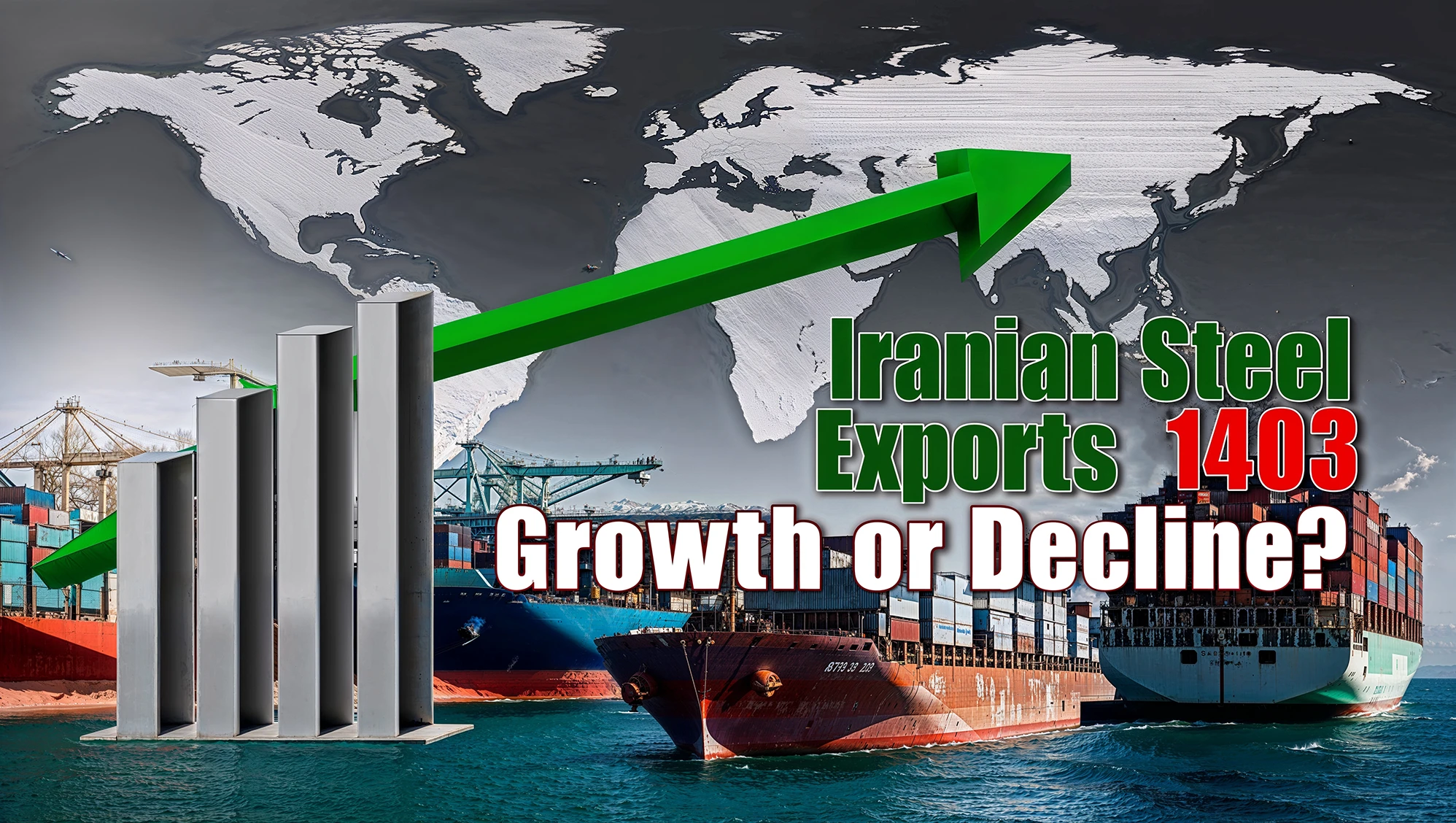Iran’s steel industry, as a driving force of the economy, plays an unmatched role in generating foreign exchange and developing the country’s infrastructure. In recent years, steel exports to Arab countries have become a main axis of Iran’s foreign trade. But what changes has this industry seen in 2024 compared to 2023? This analytical report compares statistics, challenges, and opportunities between these two years.
Year 2023: Overcoming Sanctions
In 2023, despite international sanctions and financial constraints, the Iranian steel industry managed to record an approximate 8% growth in export volume compared to 2022. According to data from Iran’s Customs, steel exports to Arab countries reached over 4.2 million tons this year, with Iraq, UAE, and Oman accounting for 70% of this market. Key factors in this success included:
– Increased demand for construction products like rebar and beams in Arab countries’ civil projects.
– Utilization of new trade corridors such as the Chabahar-Oman sea route to reduce transportation costs.
– Currency agreements with Arab partners to circumvent banking sanctions.
However, global steel price fluctuations and the devaluation of the Rial impacted the profitability of some contracts.
Year 2024: Production Surge and Market Expansion
2024 was marked by significant production growth and diversification of export markets for the Iranian steel industry. According to the Iranian Steel Association, the volume of steel exports to Arab countries in the first nine months of this year showed a 15% increase compared to the same period in 2023, with total exports expected to reach 5 million tons. Reasons for this growth include:
– Launching new production phases at steel complexes such as Mobarakeh Steel and Khuzestan Steel.
– Expanding cooperation with less developed Arab countries like Yemen and Sudan to supply steel for reconstruction projects.
– Increased exports of high-value-added products such as industrial sheets and stainless steel to the UAE and Qatar.
Moreover, a relative improvement in diplomatic relations with some Arab countries and the use of e-commerce platforms have made marketing more efficient.
Key Comparison: 2023 vs. 2024
– Export Volume: A 15% increase in 2024 compared to 2023 (forecasted 5 million tons versus 4.2 million tons).
– Market Diversity: Entry into new markets such as Yemen and Sudan in 2024, while focus in 2023 was on Iraq and UAE.
– Profitability Rate: A 10% increase in net profit due to reduced logistic costs and stabilized currency rates in 2024.
– Challenges: In both years, sanctions and competition with Turkish and Indian steel were major obstacles, but in 2023, the use of digital technologies for supply chain management reduced the impact of sanctions.
Role of Arab Countries in Iran’s Export Success
In both years, Arab countries accounted for more than 60% of Iran’s steel export basket. In 2024, the UAE, as Iran’s largest steel importer, increased its share from 25% to 35% due to high demand for building materials for projects like Dubai Expo 2025. Meanwhile, exports to Oman grew by 20%, indicating the trust building for Iranian brands in that market.
Future Outlook
With Iran’s development plans to reach 55 million tons of crude steel production by 2026, steel exports to Arab countries are expected to follow an upward trend, especially with the completion of major highway and rail projects in the Middle East. However, continued coordination between the government and the private sector to overcome financial obstacles and improve product quality is key to sustaining this growth.
This article, focusing on steel exports to Arab countries and comparing the performance of the last two years, demonstrates that despite international challenges, Iran’s steel industry has continued its growth trajectory through strategic planning.




